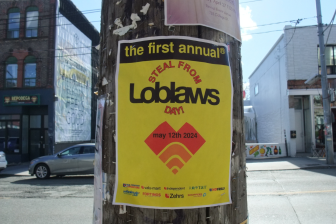Edmonton’s chief economist said the local economy will feel the impacts of the curtailment of oil production – not immediately, but eventually, if the production cuts persist.

John Rose spoke at the Economics Society of Northern Alberta conference on Thursday morning and provided a snapshot of the local economy.
“If the curtailments persist, obviously that’s going to depress overall levels of investment in the energy sector,” he said.
On Sunday, the province announced it will cut oil production, starting Jan.1 , by 8.7 per cent until a backlog clears.
READ MORE: Alberta orders 8.7 per cent oil production cut to help deal with low prices
Rose said the curtailment will hit Edmonton’s logistics sector, such as warehousing and transportation, as well as the manufacturing sector.
“It’s going to affect the manufacturing sector because a lot of the fabrication that goes into products used in the energy sector are actually fabricated here,” he said.
“It will take a while to hit us, but if these curtailments persist and we don’t get relief from some other source — as mentioned, Line 3 gets completed or there’s something other solution – we could be in a situation where the manufacturing sector, in particular, the logistics sector, to a lesser extent the professional services, the engineers, the environmental scientists could get hit.”
Watch below: John Rose is Edmonton’s chief economist. On Thursday, he sat down with Gord Steinke to talk about how the local economy will fare once the the curtailment of oil production kicks in.

Rose said that while the downturn in 2014 took between one and one-and-a-half years to hit Edmonton’s economy, this current oil crisis could only take between six and nine months to ripple through the city.
RELATED: Who are the winners and losers from the Alberta oil production cut?
“This time around, I think it’s going to be much quicker. People remember what happened after 2014 and so you’re going to see employers tightening up a little more quickly,” Rose said.
Rose also said it could take until the mid-2030s for Edmontonians to experience the same GDP per capita that they did back in 2014, which was the last peak for GDP per capita.
“With the recovery and return to growth, we’re seeing that number improve but we’re looking at very, very modest growth rates compared to historical standards – 2.5, maybe three per cent once in a while. But below that, we’re going to continue to see pretty favourable population growth,” he said.
Rose said that included natural population growth, strong international migration and significant numbers of inter-provincial and intra-provincial migration.
“It will be a long, hard grind and for a lot of people, it’s going to be a real adjustment to get used to the fact we’re not going back to another boom.”
- Posters promoting ‘Steal From Loblaws Day’ are circulating. How did we get here?
- Canadian food banks are on the brink: ‘This is not a sustainable situation’
- Is home ownership only for the rich now? 80% say yes in new poll
- Investing tax refunds is low priority for Canadians amid high cost of living: poll




Comments